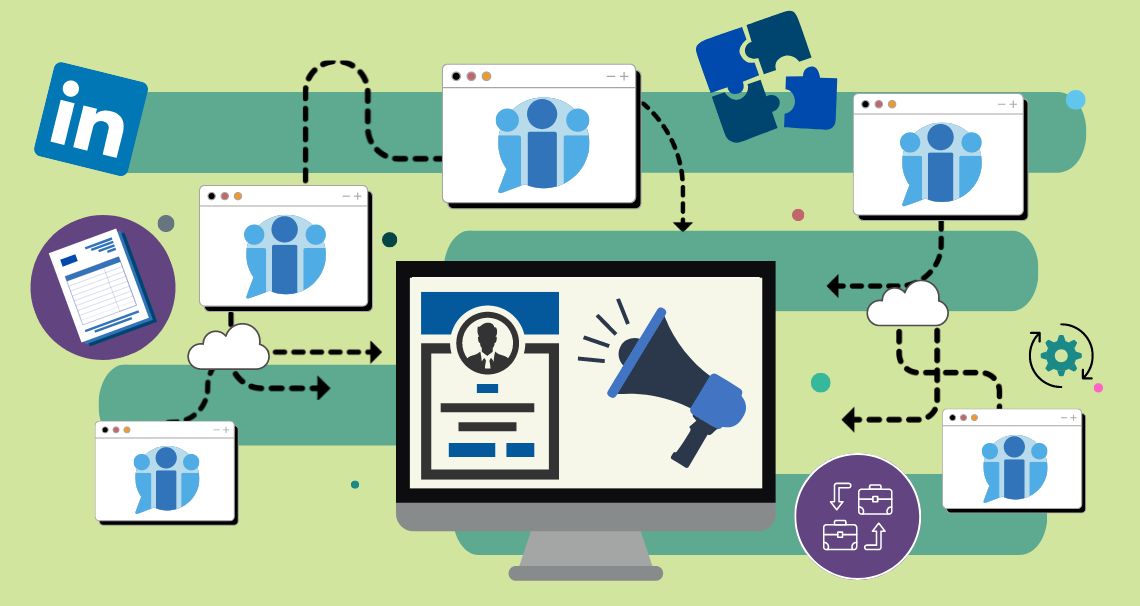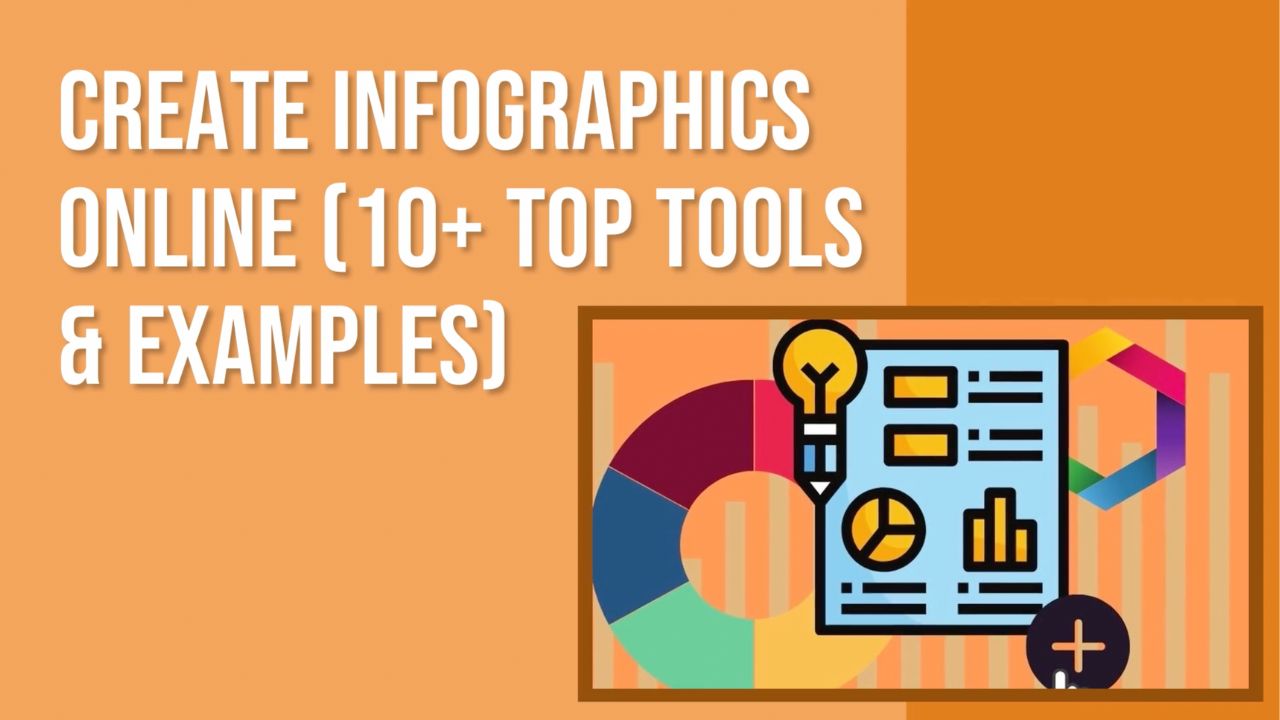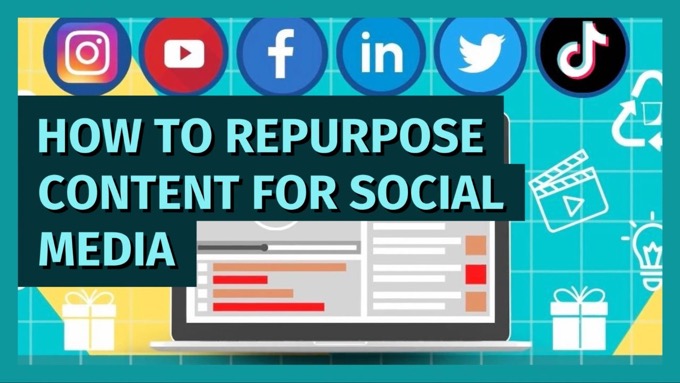In B2B? Then LinkedIn is of course the ideal social platform.
Hundreds of millions of users across the world use the network to:
- Keep up to date with their industry
- Connect with others
- Create and take advantage of opportunities
- Help spread the word about their businesses.
In fact, B2B professionals mostly find LinkedIn far more effective than Facebook in reaching relevant decision makers.
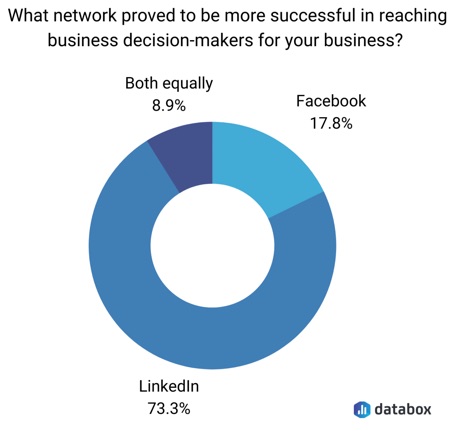
A key part of the platform is LinkedIn Groups.
So how should you approach using LinkedIn Groups for B2B marketing?
Let's find out! This post looks at:
- Why you should consider using LinkedIn Groups
- The 4 steps you need to start using LinkedIn Groups for B2B marketing
So firstly…
Why Should You Consider Using LinkedIn Groups?
1. Increase Your Online Footprint
When potential customers keep hearing about you in multiple different channels, they are more likely to trust you, simply because it gives you more credibility and legitimacy, and they feel a stronger sense of relationship with you.
For B2B businesses, LinkedIn Groups are an ideal additional channel on which to grow your online presence and visibility, and help connect with your market.
Consider using LinkedIn Groups to increase your online footprint, attract new leads and customers, build valuable relationships, understand your market, and grow your own expertise.Click To Post On2. Attract New Leads and Customers
By connecting with people in your target market via LinkedIn Groups, a proportion of those will become new leads for your business, some of whom will then go on to buy from you.
If you’re not in the places where your market is congregating, then naturally they’re less likely to know about you or come buy your products and services.
3. Build Valuable Relationships
A lot of the networking and communication that occurs on LinkedIn takes place in LinkedIn Groups.
The facility provides an ideal opportunity to network with and get to know others, and build relationships that can be potentially very beneficial for both sides.
For example, you may find yourself building relationships with people who turn out to be key decision makers, and/or people willing to partner with you in some way in future.
4. Understand Your Market
Observing and participating in relevant conversations in LinkedIn Groups can provide you with unique insights into your market that can prove invaluable, helping to keep you abreast of factors such as:
- What’s happening in your market…
- The current challenges and problems people are facing…
- How people view competing products and services (and even your own).
5. Grow Your Own Expertise
The conversations that happen in LinkedIn Groups, such as people contributing their knowledge and know-how, whether directly within posts or via the content they link to, can only help to grow your own expertise.
Four Steps to Start Using LinkedIn Groups for B2B Marketing
1. Find Relevant Groups
The first step is of course to find groups that are relevant to your business and the type of people you want to reach.
You can join up to 100 groups in order to research different ones, but you’re only looking to then contribute to a handful of highly targeted ones.
You don’t want more than you can regularly contribute to on a consistent basis (see #2, next). That might just be one or two to start with. You can always add more in future as you get used to contributing.
To use LinkedIn Groups effectively for B2B marketing, don't start engaging in more groups than you can handle on a regular and consistent basis.Click To Post OnTo find relevant groups:
- Use LinkedIn’s search facility and type in a relevant keyword, and click on a relevant result. You might not see a ‘groups’ type result, but just click on something else that looks relevant.
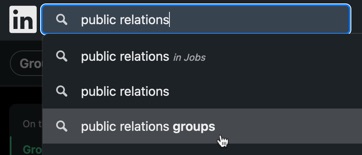
- Somewhere in the results feed, you’ll likely see a section relevant to groups. Click the See all group results button. You can also just click the Groups button that shows underneath the search field.
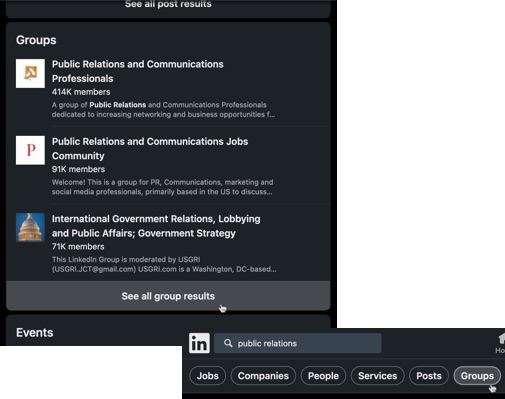
- The next stage is to research the various groups available. This can include finding further groups by repeating the steps above but with different keywords.
- Find groups that look to be of direct relevance to the type of people you’re hoping to connect with.
- In order to see the content of the group and research it further, you need to join it. Click to join the most relevant groups, and wait for your application to join to be approved.
- Don’t just join the groups with higher member numbers—often the smaller groups attract far more meaningful levels of engagement.
- Once approved, research the groups further. Aim for groups where there is meaningful interaction between members on a regular basis. Avoid groups that just consist of a stream of link posts that no one engages with.
2. Become Active — Regularly and Consistently
Now you’ve got your small handful of groups, it’s time to start contributing.
The most important factor—as with most aspects of content marketing, including social media—is that you’re taking action on a regular and consistent basis.
That means scheduling in some regular time every day—it need only be a few minutes—to check into each of your chosen groups and contribute in some way.
You’ll get no benefits if you just show up for two or three days, make the odd post or comment, and then disappear, never to be seen again.
It takes regular, consistent action, hence the small number of groups to start with so that you’re able to commit to doing just that.
To start using LinkedIn Groups for B2B marketing, find relevant groups and commit to engaging on a regular and consistent basis, including sharing relevant content.Click To Post OnTo start with:
- Make sure you’re aware of the rules of the group, such as the type of content you’re allowed to post and what is frowned on.
- Spend some time just reviewing the type of content that other members of the group post, and the type of engagement that takes place.
- Engage with other people’s posts—this helps introduce you to the group and other members, and allows you to positively contribute without immediately trying to grab the limelight before anyone really knows you.
After a few days of ‘warming up’ and familiarizing yourself with the group, you can then start contributing your own posts.
Your activities in the group can include:
- Answering questions from other members where you can add value…
- Asking questions important to you (there are likely many others with a similar question who would also find the answers helpful)...
- Starting conversations…
- Supporting other members of the group, by engaging with their posts…
- Sharing relevant content (see #3 below for more on this)...
Above all, avoid approaching the groups you’re active in with a promotional mindset where your only intention is to constantly refer and link to your own products and services.
Instead, just aim to contribute and add value. As you do so, you’ll find people will naturally find their way to your products and services, such as via your profile, as a consequence of their interest in your contributions.
That doesn’t mean you should never mention what you sell. Sometimes doing so might fall naturally into a particular conversation. But avoid coming across as ‘sales-y’ or you can run into problems.
The impression you should aim to always leave with other group members is that your sole motivation is to help them, contribute and add value, rather than someone who has their foot jammed in the door, intent on pushing a sale.
3. Share Relevant Content (But Not Always Your Own!)
As briefly mentioned above, one way to contribute to the groups you’re active in is to share content that’s relevant to the group and helpful to members.
However, again it’s important to be respectful of the group and avoid always pushing your own content, simply because it comes across as self-promotional.
That doesn’t mean you should never post links to your own content, it just needs to be well balanced with third-party, non-self-serving content too.
Roughly speaking, a 40/60 split is probably about right, with the balance in favor of third-party content. In other words, in 40% of your content-sharing posts, link to your own content; in the remaining 60%, link to useful content you’ve found elsewhere.
On top of your other contributions to any particular group (so including different types of post as well), this will probably mean that less than 20% of your posts link back to your own content, which is about right. But as always, it does depend on the group in question.
However, in the early stages of contributing to a group, the percentage should probably be quite a bit lower than that. Tread gently, remember you’re a newcomer to the group, and create a positive first impression.
4. Invite Members to Connect
Finally, you’ll find that after regularly contributing to your selected groups for a while, that you start to naturally interact with some group members more than others.
So start inviting those members to connect with you outside of the group, by inviting them to join your LinkedIn network.
This enables you to message each other privately and build stronger relationships that can potentially turn into a sale or a business partnership of some kind, or lead to other opportunities.
Frequently Asked Questions
Why should I consider using LinkedIn Groups for B2B marketing?
Using LinkedIn Groups can increase your online footprint, attract new leads, build valuable relationships, understand your market, and grow your expertise.
How can I find relevant groups to use for B2B marketing on LinkedIn?
Use LinkedIn's search feature to find groups relevant to your business by typing in keywords, exploring different groups, and joining the most appropriate ones.
How can I effectively engage in LinkedIn Groups for B2B marketing?
Become active in a few highly targeted groups, follow group rules, engage with other members' posts, share relevant content (including your own sparingly), and prioritize adding value over self-promotion.
What is the best approach to sharing content in LinkedIn Groups for B2B marketing?
Share a balanced mix of your own and third-party content, aiming for about a 40/60 split, with the majority being non-self-serving content, especially when new to a group.
How can I build stronger relationships through LinkedIn Groups for B2B marketing?
Invite active group members to connect with you on LinkedIn outside the group to foster stronger relationships that may lead to business partnerships or other opportunities.
To Conclude
You now know exactly how to start using LinkedIn Groups for B2B marketing, but it’s worth repeating the most important factor — regular and consistent contributions.
There’s little point starting to use LinkedIn Groups unless you intend to do so for an extended period of time so that you keep showing up.
As with most content marketing, that’s where the benefits come from. Those who stay the course reap the rewards.
So schedule in regular daily time for LinkedIn Groups, monitor your progress, and allow the results to build over time.
